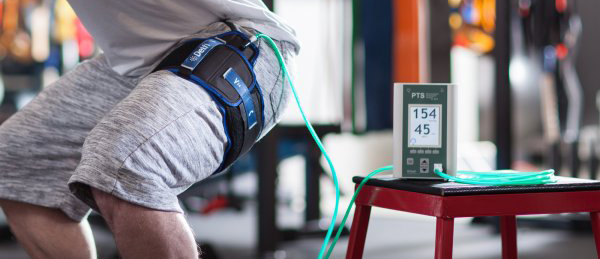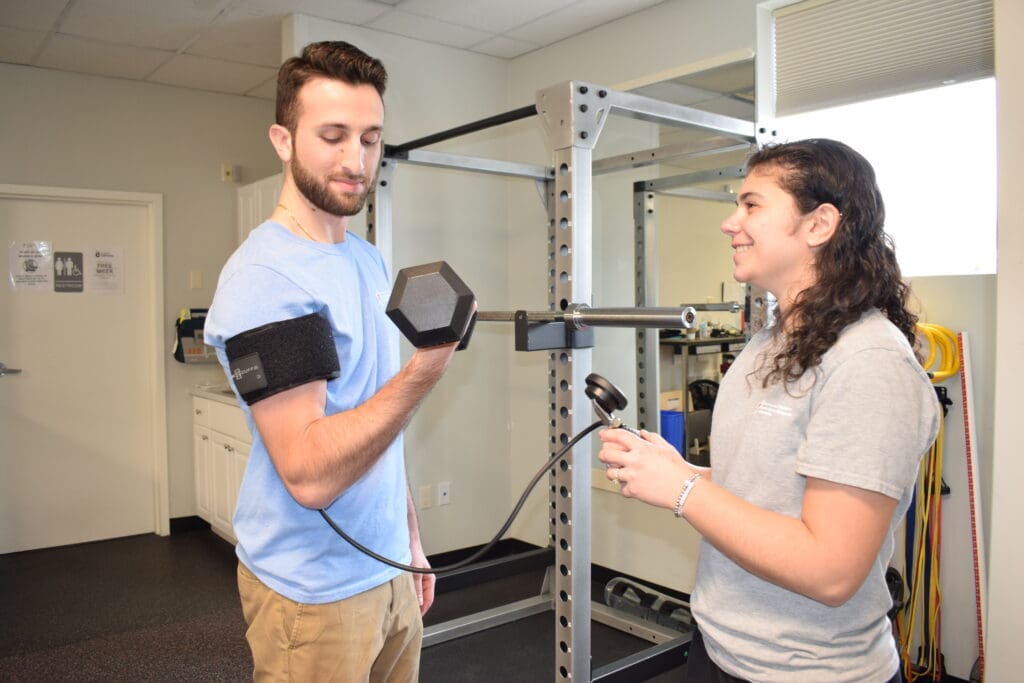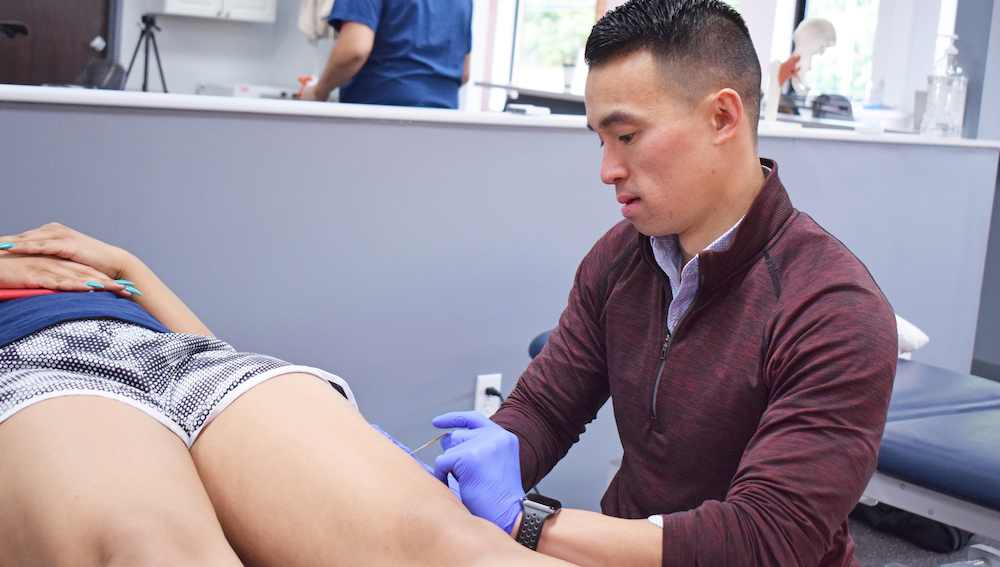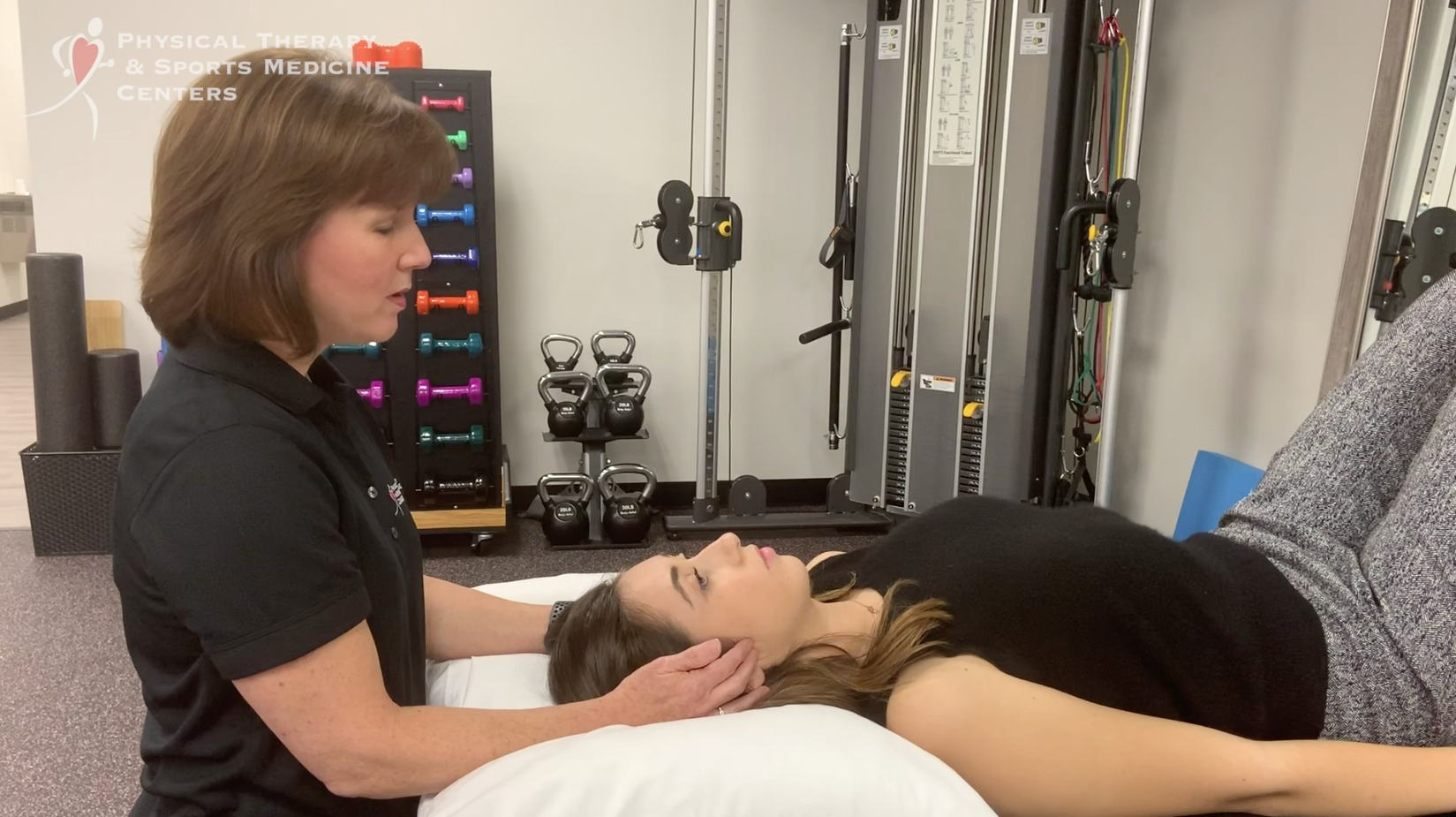5 Modern PT Techniques You Can Benefit From Today

Physical therapy is an ever-changing practice that constantly adapts to new research. While PT was once considered primarily beneficial for the elderly, those recovering from surgery or individuals experiencing severe musculoskeletal issues, the practice has evolved to treat a wide range of musculoskeletal conditions and is even used to prevent pain and injuries from ever occurring. Everyone from professionals who work desk jobs to elite athletes can benefit from today’s modern approach to physical therapy.
To help you better understand the variety of innovative treatment options out there, we broke down some of the most cutting-edge treatments that many people aren’t aware of – but could likely benefit from.
Blood Flow Restriction (BFR) Therapy

BFR therapy (pictured above) has been gaining momentum in the physical therapy and fitness world as a technique to help patients recover faster and more effectively. While this strength-training technique can be beneficial for anyone looking to increase strength and muscular endurance, it is especially helpful for people who can’t tolerate heavy weight loads, such as the elderly, people with chronic diseases and/or those rehabbing from injury or surgery.
The theory behind BFR therapy is that it partially restricts blood flow from a limb back to the heart using an elastic band or cuff. This blockage deprives the muscle tissues of oxygen and creates a pooling of blood, creating conditions like what you might experience following a high-intensity workout, which helps to stimulate muscle growth. Therefore, patients can still build muscle despite using lighter weights.
This ability to increase strength with lower weights makes BFR therapy an extremely effective and safe treatment under the supervision of a certified physical therapist.
Learn more about Blood Flow Restriction Therapy.
Trigger Point Dry Needling

If you’re experiencing stubborn aches, pain, and/or frequent muscle tightness or pulled muscles, dry needling might be just what you need. When strained or overused, muscles can develop knot-like areas called myofascial trigger points, which can cause pain, stiffness and other problems. Dry needling involves a therapist inserting a hair-thin monofilament needle into a trigger point in the muscle, causing the muscle to contract and release, which relieves the trigger point while often activating the brain to release endorphins. Patients often feel better after just one dry needling session, which others gradually feel relief from muscle pain after only a few sessions.
It’s important to note that Dry Needling is very different from acupuncture, which is based on Traditional Chinese Medicine. Dry needling is based on Western medical research and scientific principles. While it has become a popular approach to treating muscle pain quickly for high-level athletes, more and more individuals experiencing every-day muscle pain have found relief through Trigger Point Dry Needling.
Learn more about Trigger Point Dry Needling.
Pelvic Floor Physical Therapy
Many people, especially women who are pregnant or post-partum, suffer from urinary or bowel incontinence, sexual dysfunction, and pelvic pain, but these symptoms are often difficult to talk about, and there is a lack of information available to the public on what the available treatment options may be. Individuals experiencing these symptoms are often unaware that they can likely be treated by a trained physical therapist!
Physical therapy for pelvic floor issues has become more widely offered as an effective treatment to pelvic pain and other pelvic floor dysfunctions. A licensed physical therapist will complete an evaluation to understand the root causes of the issue, and then create a custom treatment program that includes education, exercises targeting weak pelvic floor muscles, and manual therapy to help you feel confident and pain-free.
Learn more about Pelvic Floor Physical Therapy.
Physical Therapy for Headaches and Jaw Pain
We’ve all experienced headaches from time-to-time, and luckily most are short-lived and no cause for concern. While most regular headaches can be treated by simply drinking water, eating, resting, or possibly taking over-the-counter pain medicine, when headaches are severe and/or last for a few days or weeks, they may be in need of further treatment.
Physical therapy can be an effective treatment for multiple different types of more severe or long-lasting headaches. A physical therapy program for headaches may include manual therapy, exercises, stretches to relieve pressure, education on proper posture and biomechanics, and even Trigger Point Dry Needling when appropriate.
One cause of headaches and other symptoms such as jaw pain, difficulty chewing or swallowing, pain behind the eyes or neck pain is Temporomandibular Joint Disorder (TMD). TMD is a common condition that limits the natural function of the jaw and can be attributed to several different factors, but luckily it can be treated by a trained physical therapist!
A physical therapist can help by educating you on proper posture of the jaw, head, neck, breastbone, and shoulder blades in a variety of positions. They can also use manual therapy to improve joint mobility and muscle flexibility, break up scar tissue that sometimes develops, and restore function to muscles and joints in and around the jaw. A therapist will also teach you special exercises to strength the muscle of the jaw and restore more natural movement. Click here to see Rebecca Petrosino, Partner & Director at PTSMC Fairfield, explain TMD and demonstrate treatment.
Learn more about headaches and TMD Therapy.
Vestibular & Balance Therapy

Vestibular disorders, including vertigo, dizziness, and other balance and spatial-related disorders, can impact all areas of life and make people fearful of activities that we take for granted, such as driving or even doing chores around the house. Physical therapists can help determine the cause of the issue through a variety of tests, including assessing the visual and vestibular systems and performing a movement and balance screen. The tests will assess sensations, muscle strength, extremity and spine range of motion, coordination, posture, balance and walking ability in order to determine the root causes of the dysfunction.
Based on the therapist’s findings, patients will start a custom, exercise-based treatment program to help reduce symptoms and address the causes long-term. They will also give strategies to identify and reduce symptoms when performing daily actions outside of the clinic, such as driving or going for a walk. Living with a vestibular disorder can be frustrating, but PTs are here to help get you back to moving confidently.
Learn more about Vestibular & Balance Therapy.

